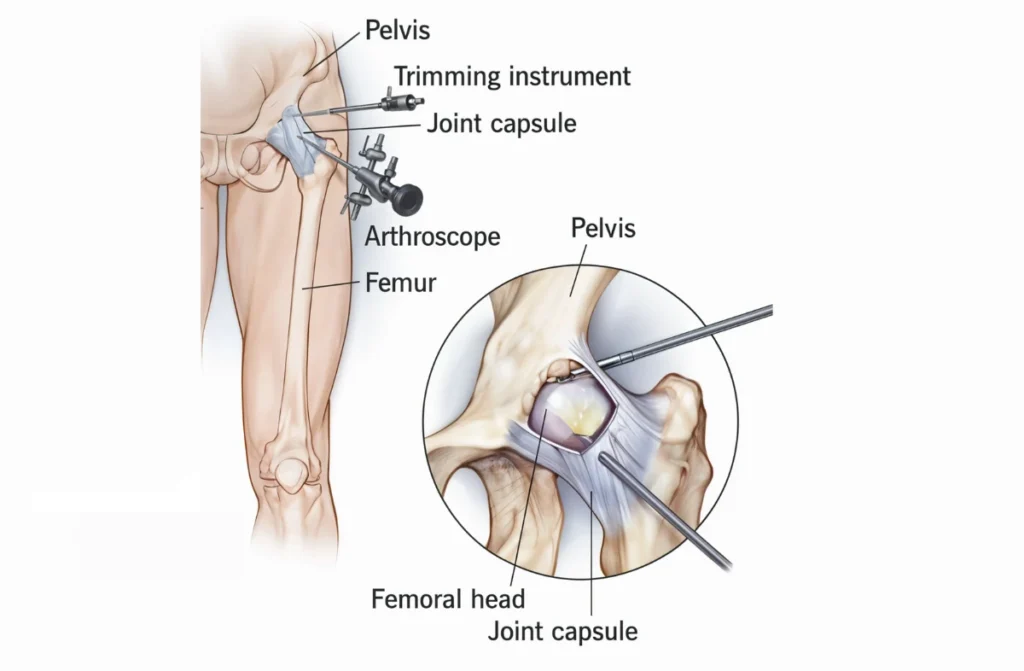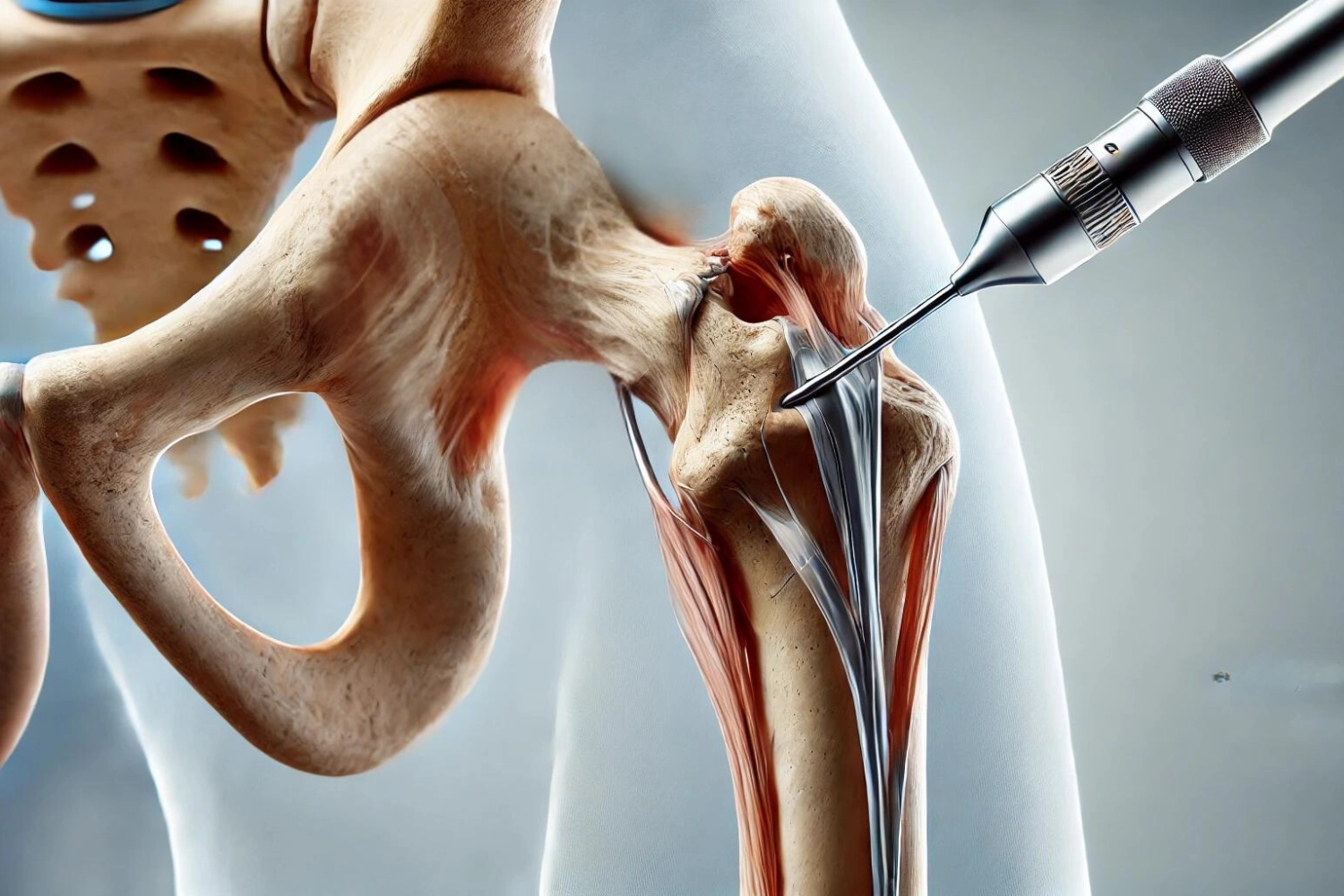Hip pain can interrupt everyday activities, from walking to sitting comfortably. When discomfort persists due to cartilage damage, labral tears, or joint instability, a minimally invasive solution like arthroscopic hip reconstruction surgery in Chennai can restore mobility without the need for Hip full joint replacement. This advanced technique is ideal for active individuals and those looking to preserve their natural hip.
At Dr. Omer Sheriff’s orthopedic center in Kolathur, patients receive modern, precise care aimed at long-term joint health and early recovery. The procedure is less invasive, causes minimal scarring, and promotes faster healing—helping you return to daily life sooner and stronger.
Understanding Arthroscopic Hip Surgery
Arthroscopic hip reconstruction surgery in Chennai involves repairing or reshaping the hip joint using a small camera and instruments inserted through tiny incisions. Unlike traditional surgery, this approach avoids large cuts, reducing trauma to surrounding tissues.
Common conditions treated include:
- Labral tears (cartilage damage along the hip socket)
- Femoroacetabular impingement (abnormal bone growth that restricts movement)
- Cartilage degeneration
- Loose fragments or soft tissue inflammation
With arthroscopic hip treatment in Kolathur, patients experience improved mobility and reduced pain, especially when the procedure is done early.

When Is It Needed?
If you experience the following, it may be time to explore arthroscopic hip reconstruction surgery in Chennai:
- Groin or lateral hip pain during activity
- Clicking or locking sensation in the joint
- Limited flexibility or stiffness
- Difficulty walking or climbing stairs
- Hip pain that doesn’t respond to physiotherapy
In many of these cases, arthroscopic hip labral repair in Chennai is recommended, especially when the labrum (the cartilage lining the hip socket) is torn or damaged due to injury or repetitive movement.
The Importance of Early Treatment
Delaying treatment for structural hip problems can lead to progressive joint damage, early arthritis, and even the need for full replacement. Opting for arthroscopic hip reconstruction surgery in Chennai early can preserve your joint, maintain muscle strength, and avoid complex procedures later on.
Dr. Omer Sheriff focuses on preserving the native hip joint using the latest arthroscopic methods. His approach includes comprehensive evaluation and rehabilitation planning for every patient.
Types of Hip Arthroscopy Procedures
Depending on the condition, your orthopedic surgeon may recommend one or more of the following:
- Labral Repair: This procedure is a core component of arthroscopic hip labral repair in Chennai, restoring the cartilage ring that stabilizes the joint.
- FAI Correction: Bone reshaping to reduce friction and restore smooth movement.
- Cartilage Treatment: Smoothing or regenerating damaged cartilage surfaces.
- Debridement: Cleaning loose fragments or inflamed tissue.
In some complex cases, arthroscopic hip replacement surgery in Chennai may be advised when reconstruction alone may not be enough.
Recovery and Results
Most patients who undergo arthroscopic hip reconstruction surgery in Chennai return home the same day. Recovery times vary, but early weight-bearing, physiotherapy, and guided rehabilitation allow most people to resume daily activity within a few weeks.
Benefits include:
- Improved hip stability and movement
- Reduced inflammation and joint irritation
- Lower risk of arthritis progression
- Minimal scarring with faster healing
- Delayed or avoided need for full hip replacement
With guided care from arthroscopic hip treatment in Kolathur, long-term outcomes are significantly better when treatment begins before major joint damage sets in.
Why Choose Dr. Omer Sheriff?
Dr. Omer Sheriff is known for his precision and compassionate approach to hip care. Located in Kolathur, his practice combines advanced imaging, minimally invasive techniques, and patient-specific treatment planning. Whether it’s a sports injury or chronic joint problem, patients trust him for procedures like:
- Arthroscopic hip reconstruction surgery in Chennai
- Arthroscopic hip labral repair in Chennai
- Arthroscopic hip replacement surgery in Chennai
Each patient receives personalized rehabilitation plans, with support at every stage of the healing process.
Conclusion
If hip pain is holding you back from enjoying life, consider the benefits of arthroscopic hip reconstruction surgery in Chennai. This innovative treatment preserves your joint, restores mobility, and avoids the challenges of open surgery. With Dr. Omer Sheriff’s expert care in Kolathur, patients receive state-of-the-art treatment with lasting results.
For those exploring arthroscopic hip treatment in Kolathur, now is the time to act. Schedule your consultation today and take the first step toward pain-free movement and joint health.
Read also: Pelvic & Acetabular Fracture Fixation


